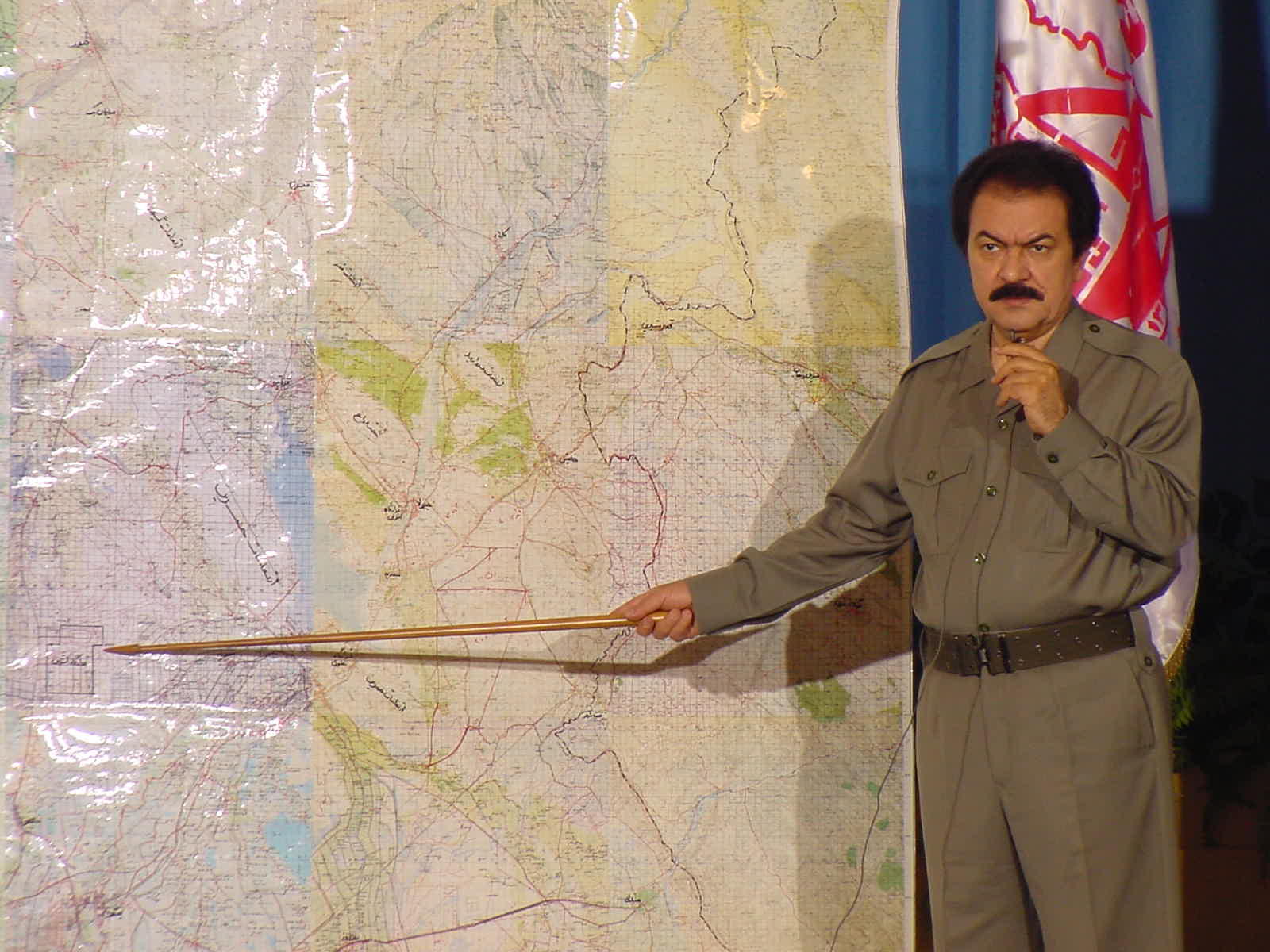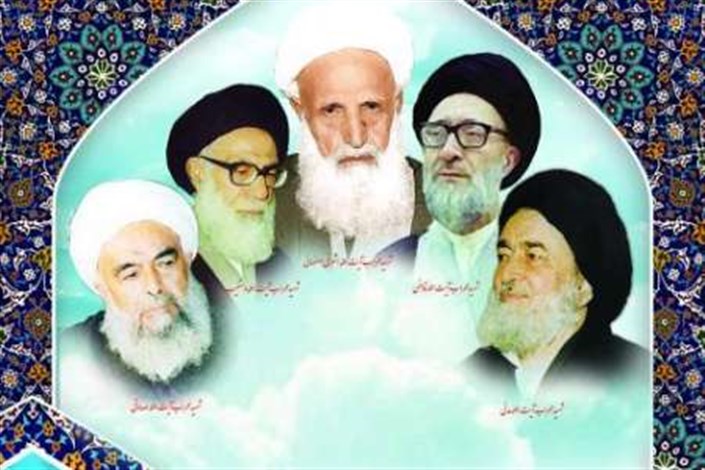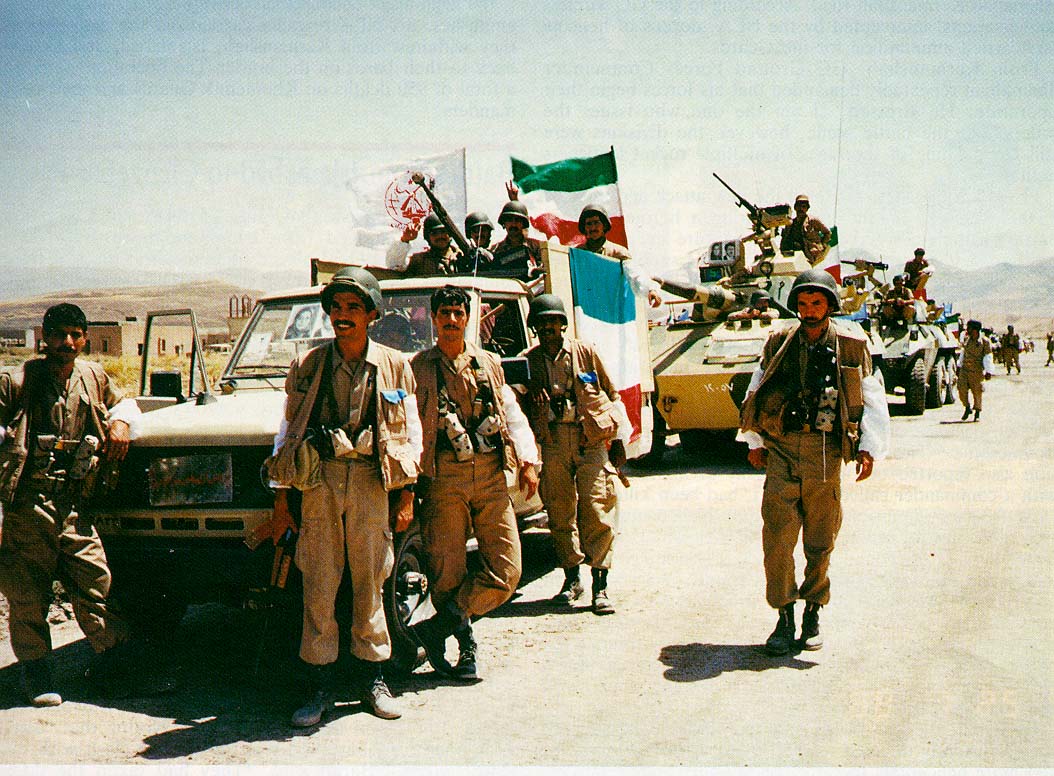
Sharqh Daily (Translated by Habilian Association)
A look at their political career reveals that they have performed many assassinations from the top-level authorities to people in the streets. They do not care about their targets, and it seems that violence and shedding blood are a part of their manifest; since they use weapons for intraorganizational purification, too. An example would be Majid Sharif Vaghefi, who was killed and his body was burnt by the members of Mujahedin-e Khalq (MKO) just because he refused to accept change in the ideology of the organization.
August 30th marked one of the MKO’s most notorious crimes against Iranian people: assassination of the then President and Prime Minister of Iran. These assassinations were among the terrorist acts that the MKO initiated from mid-June in the form of an armed rebellion. The group that seemingly was prepared for serial assassinations of Iranian authorities, started targeted assassinations from June 27th 1981. On that date, Ayatollah Khamenei, the current Supreme Leader of Iran, was assassinated via a bomb at Aboozar Mosque of Tehran, when he was delivering a speech for prayers. The day after that, the MKO committed Haft-e Tir crime. On 28 June 1981 (7 Tir (Hafte Tir) 1360 in the Iranian calendar), an MKO operative named Mohammad Reza Kolahi blew up a powerful bomb at the headquarters of the Iran Islamic Republic Party (IRP) in Tehran killing the chief justice and party secretary Ayatollah Mohammad Beheshti, four cabinet ministers, twenty-seven members of the Majlis, and several other government officials. On June 29th 2018, Kazem Afjaei, an agent of the MKO, assassinated and killed Mohammad Kachouei, the then head of Evin Prison, in the Islamic Revolutionary Court by a pistol.
Summer of 1981, which was a bitter season for Iranian people, was ended with the assassination of President and Prime Minister of Iran. on 30 August 1981 the MKO blew up the office of Mohammad Javad Bahonar, Prime Minister of Iran, killing Bahonar, President Mohammad Ali Rajai, and six other Iranian government officials. The bombing, which occurred just two months after the Hafte Tir bombing, was another instance of MKO terrorism against leading Iranian officials during the early 1980s.

Endless Assassinations
The MKO has assassinated more than 12000 Iranian people from different classes. One of these classes who were hated by this terrorist group due to their popularity between the people were religious figures. Among religious figures who fell victims of MKO’s terrorist acts in the early years of the 1980’s, one can refer to Ayatollah Madani, Tabriz’s Friday Imam; Ayatollah Hasheminejhad, the IRP’s secretary in Mashhad; Ayatollah Dastgheib, Shiraz’s Friday Imam, Ayatollah Sadoughi, Yazd’s Friday Imam, Ayatollah Ashrafi Esfahani, Kermanshah’s Friday Imam.
Along with the targeted assassination of prominent figures and government authorities, the MKO had put blind attacks on their agenda. In street fights, they threw salt and pepper to the face of people and injured them with knives, razors and other cold weapons. On March 14th, 1985, the MKO members detonated a 7-kg bomb at the location of Friday Prayers of Tehran performed by Ayatollah Khamanei, assassinating 14 people and injuring 88 individuals. In 1982, they initiated some terrorist acts across Iran with the goal of “cutting the fingertips of the government”. In these operations, being a member of Basij and Sepah organizations or even having a religious appearance (mainly having a beard) could lead to being “revolutionary executed” by the MKO.
Cutting the Fingertips of the Government by Assassination of Normal People
In an issue of one of its domestic journals, the MKO published an editorial with the title of “cut the fingertips of the regime in any place possible”, listing some of its terrorist acts. Among their reasons for assassinating individuals included “being subservient to the government”.
According to a report by Habilian quoted from the journal of the MKO on October 23rd 1982, one of the operative units of the MKO assassinated a person called Davoud Nezam al-Beka in his store in Tehran. After completing the operation and exiting the store, they assassinated a member of the Islamic Revolution Committee with a machine gun and fled the crime scene.

Reasons for Assassination of a Real Estate Agent
Morteza Nasehpour, one of the members of MKO, confessed about the assassination of Amir Mazaherifar, who had a real estate agency: “another place considered as a damage channel by them (the MKO) was real state agencies; since they believed that due to the existence of a third copy, which contained the information of tenants, the government was able to find the team houses of this terrorist group. Therefore, they thought that those agencies were working with the government. With this general analysis, they just had to determine which agencies are cooperating with the government. Due to lack of an informative canal, they followed this idea that whoever had the picture of Imam Khomeini and other religious and governmental leaders in their agencies, they had to be assassinated. They ordered us to assassin owners of any real state agency with the mentioned pictures. But why? Only because these pictures were the sign of being Hezbollahi (pro-government) and since it is an agency, they will reveal the places of team houses. Therefore, they must be assassinated (all of these justifications are based on speculations). Yes, they ordered us to assassin these people solely based on conjectures and suspicions.”
According to the reports published in Habilian, he added: “one order was one assassination and 30 operations by each terrorist unit a day. They told us that if 30 terrorist acts are performed a day across the city, the government will be overthrown within a month and the militia forces will be appointed as commanders of “the People’s army”. (their statements on the overthrowing of the government within a specific duration or until a determined date were only said to motivate the operational workforce). This time, they gave a similar order. However, this time the order was somehow different and more insidious, issued for the survival of the group. The order involved performing 30 terrorist acts to overthrow the government, promising us the position of Khalgh military commanders after the overthrow. It means that they motivated the terrorist workforce of the organization to perform more terrorist acts with this insidious and hypocritical order. The group members tried to perform one terrorist act a day in order to overthrow the government sooner. This was another type of deception of the group members, by which they were able to easily deceive the youth and kill normal society members.”
Torturers
The MKO had a hand in torturing as well. They abducted their targets and tortured them to death. One of the most famous tortures by this organization was related to three IRGC forces and one shoemaker, who were buried in the deserts around Tehran.
Mehran Asdaghi, the Tehran's military commander of this organization, explained about the torture of forces of the Islamic Revolution Committees: “team house was the center of the special region in Karoun Street. Mahdi Katiraei and Hossein Abrishami were there and Javad Mohammadi (Taher) was the security of the house. When guarding the house, Taher suspected the presence of a young man and tried to identify him based on orders of the organization. The next day, Taher saw the same person along with another man and reported this issue to top officers of the special section, who ordered the abduction of the two men. With the help of Reza Hashemloo and Mohammad Jafar Hadian, Taher kidnapped these two men. They blocked the way of these people with a car and told them that they were officers of the Islamic Revolution Committees and they should come with them. Then, the two men were taken to a house in Bahar Street, which was previously prepared for torturing.
The bathroom of this house was soundproofed by thick nylons. In addition, the tools seen in the house included ropes and cables, masks, handcuffs, and lead sticks, that could make a person unconscious when placed on the back of his neck, chains, locks, and cyanide. Taher along with Mostafa Madanpisheh and Shahram Roshantabar were responsible for torturing of these young people. The main objective of their quick reaction to the presence of these individuals in that street and neighborhood was realizing whether information about the house of the Karoun Street has been leaked or not.”
In another part of his confessions, he stated: “after the interrogation, ID cards of the men were taken out from their pockets, which confirmed that they were officers of the Islamic Revolutionary Guard Corps. Then, they were tied to a chair with ropes and their chair was laid on the floor. Tortures included hitting the sole of the foot and other body parts with thick and multilayered cables and stuffing a cloth into their mouth so that others would not realize what was going on in the house. The same, Masoud Ghorbani informed me that I was responsible for interrogation by the order of Rahmat (Hossein Abrishamchi), and he asked me to prepare questions together in order to determine how information about the team houses has been leaked. Since then, I was the head of this issue and acted as a person who executes commands of the organization. We would wear masks to evoke fear. So, I wore my mask and entered the bathroom. I saw that one 16-17-year-old boy was on the floor at the corner of the bathroom with his hands and legs tied with chains. His name was Taleb Taheri, and I saw that his legs were bruised and swelled and blisters were observed on his body.”
He continued: “I went to the room and saw another person called Mohsen Mirjalili, who was a 24-25-year-old man sitting in the corner of the room with hands and legs tied with chains. Similar to Taleb, there were signs of torture by cable on his body. Mostafa Madanpisheh told me that the hostages were tortured a lot yesterday to determine whether they were monitoring the house or not. However, they denied this issue and said that they had no such intention. I prepared the questions and the torturing began. We took them to the bathroom one by one while their legs had blisters and they were screaming.”
Asdaghi continued: “Mostafa had stuffed their mouths with clothes. I hit them as long as the blisters on the sole of their feet popped and blood came out. After that, Mostafa bandaged their feet and prepared them for torture again. All of my questions were denied and no response was received. Nevertheless, I was ordered to obtain information from them. We picked things up the next day. First, Javad Mohammadi tortured them. Then, we tied them to the same chairs and poured boiling water on their swollen and bloody feet, which led to the breaking of their skin and popping of blisters. They became unconscious several times. Blisters would immediately appear when pouring boiling water on their faces and heads. They lost a lot of blood. Taher (Javad Mohammadi) cut their bodies with the tip of a knife in a way that nobody was left uncut.
Masoud Ghorbani and I went into the bathroom to deal with Mohsen Mirjalili. Masoud threatened him with cooking him if no valuable information is obtained. Then, he asked me to bring the iron. After becoming completely hot, he suddenly put the iron on the back of Mohsen Mirjalili, who strangely opened his mouth and fainted. Smell of burning filled the room. I was really scared, Masoud was scared as well but tried to control himself.”

In the Arms of the Enemy of the Nation
This was part of the confessions of just one of the MKO members. Nonetheless, they returned to the country during 1980s, when Saddam had attacked Iran. At that time, Saddam had built a headquarter for the MKO members and provided financial and military equipment to them. The MKO members, who seem to be turned into killers, also murdered people (the Shias and Kurds) in Iraq. They collaborated with the enemy and followed their assassinations in Iran with the support of Saddam.
However, this was not the end of the story. They continued their assassinations in the 1990s. They carried out mortar attacks targeting the defense industry of Iran and detonated bombs in the office of Attorney-General of the revolution and Islamic Revolutionary Court in Tehran during June 1998, assassinating Asadollah Lajevardi, former head of Evin Prison. They carried out another mortar attack targeting the ministry of intelligence in Tehran early 1999. During April 1999, they assassination Ali Sayad Shirazi at his doorstep in Tehran.
After many years, while the MKO members have no place in Iraq due to the execution of Saddam, they are now financially and politically supported by the “Saudi Arabia”. The presence of Turki bin Faisal Al Saud in the conference of the MKO held in Paris, is indicative of the new support of the MKO by the Saudis. However, the presence of this Saudi guest was associated with the announcement of death of Masoud Rajavi.
